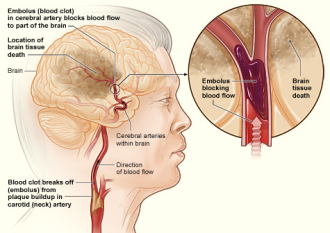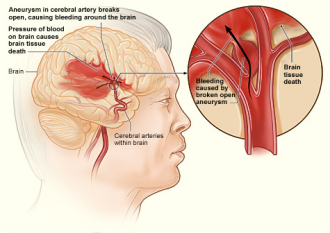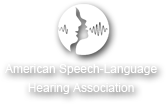CVA or Stroke
Stroke Rehabilitation
Strokes occur when blood flow is lost or diminished in the brain. When blood flow is blocked or lost, localized damage occurs. Stroke symptoms vary depending on the severity and location of the damage, but typically may include:
- Weakness or partial paralysis, usually on one side of the body
- Speech and swallowing difficulties
- Trouble with balance, walking and movement
- Difficulty grasping and using the affected hand
Stroke symptoms often respond to rehabilitation treatment. A careful therapy plan targeting strength, skill and speech improvement can help bring the stroke victim to the fullest potential of recovery and function. Two types of strokes are:
| Ischemic | Hemorrhagic |
 |
 |
Reducing stroke risk
According to the National Stroke Association, up to 80% of all strokes are preventable. If you have one or more risk factors, it’s important that you learn about changes you can make to prevent stroke.
Risk factors leading to stroke
According to the American Stroke Association, the risk factors for stroke can be hereditary, while others may result from lifestyle choices. Those risk factors resulting from lifestyle or environment can be changed with the help of a healthcare professional.
Stroke risk factors can be changed, treated or controlled include: hypertension, high cholesterol, smoking, physical inactivity, obesity and diabetes.
Stroke risk factors that can't be changed include: family history, sex, age and race.
Tips to lessen risk: Talk to your doctor for advice on how to:
- Develop healthy food habits - a lower sodium (salt), lower fat diet
- Exercise every day
- Lower your blood pressure
- Stop smoking
- Find out if you have atrial fibrillation (irregular heartbeat)
- Moderate alcohol intake
- Find out if you have high cholesterol
- Control your diabetes
- Prevent circulation problems
Stroke warning signs: Three-step stroke screening
- Look for facial asymmetry: Ask the person to smile and look for unevenness in features – a facial “droop” or a lopsided smile – indicating weakness on one side of the body.
- Look for arm drift: Have the person raise both arms straight out in front of them and look for one arm to drift down indicating a weakness on that side of the body.
- Listen to speech: Ask the person to repeat something like, “The grass is green.” Look for slurred, garbled or absent speech or confusion.
Call 911 immediately if you or a loved one is experiencing any of these symptoms.
Stroke rehabilitation with Think-Ability Rehab includes:
- Patient and family education
- Orthotics
- Respiratory therapy
- Neuromuscular re-education






